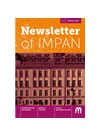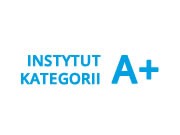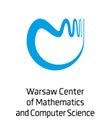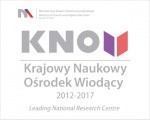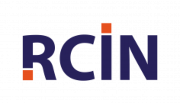Instytut Matematyczny Polskiej Akademii Nauk / pl / Działalność naukowa / Seminaria w IM PAN / Geometria niekomutatywna
ULAM SEMINAR SPRING SEMESTER 2019
Ulam Noncommutative Geometry Seminar
Organizator: Piotr M. Hajac
Miejsce: Math 350, CU Boulder, USA
Czas: Poniedziałki, 15:00 - 15:50
28 stycznia i 11 lutego 2019, 15:00-15:50
PULLBACKS OF GRAPH C*-ALGEBRAS FROM ADMISSIBLE PUSHOUTS OF GRAPHS
We define an admissible decomposition of a graph E into subgraphs E1 and E2, and consider the intersection graph F as a subgraph of both E1 and E2. We prove that, if the graph E is row finite and its decomposition into the subgraphs E1 and E2 is admissible, then the graph C*-algebra C*(E) of E is the pullback C*-algebra of the canonical surjections from C*(E1) and C*(E2) onto C*(F). Based on joint work with Sarah Reznikoff and Mariusz Tobolski.
PIOTR M. HAJAC (University of Colorado Boulder / IMPAN)
4 lutego 2019, 15:00-15:50
PSEUDO-DIFFERENTIAL OPERATORS AND THEIR SYMBOLS ON Θ-DEFORMATION OF COMPACT LIE GROUPS
In the seminal work of M. Ruzhansky et al., a very suitable pseudo-differential calculus on compact Lie groups was constructed using the Peter-Weyl decomposition of L2 functions. I will explain this formalism, then present my generalization of it to compact quantum groups, which come from the Θ-deformation of compact Lie groups.
MITSURU WILSON (IMPAN)
18 lutego 2019, 15:00-15:50
CONVERGENCE OF SPECTRAL TRIPLES
We present our recent ideas on how to show that a family of metric spectral triples is continuous in the sense of the Gromov-Hausdorff propinquity.
FRÉDÉRIC LATRÉMOLIÈRE (University of Denver)
25 lutego 2019, 15:00-15:50
QUANTUM-RIGID MANIFOLDS
Compact quantum groups are non-commutative spaces with a sufficient amount of structure to resemble classical compact groups and recover much of their behavior. Their actions on classical or non-commutative spaces capture "quantum symmetries". I will discuss a curious phenomenon whereby "sufficiently regular" classical structures do not admit genuinely quantum symmetries: a compact quantum group acting in a structure-preserving fashion is automatically an ordinary compact group. This is the case, for instance, for compact quantum groups acting isometrically on the underlying geodesic metric space of a compact connected Riemannian manifold, with or without boundary. (Joint work with Debashish Goswami.)
ALEXANDRU CHIRVASITU (SUNY Buffalo)
4 marca 2019, 15:00-15:50
INDUCTIVE LIMITS OF C*-ALGEBRAS AND COMPACT QUANTUM METRIC SPACES
In this talk, we will place quantum metrics, in the sense of Rieffel, on certain unital inductive limits of C*-algebras built from quantum metrics on the terms of the given inductive sequence with certain compatibility conditions. One of these conditions is that the inductive sequence forms a Cauchy sequence of quantum metric spaces in the dual Gromov-Hausdorff propinquity of Latremoliere. Since the dual propinquity is complete, this will produce a limit quantum metric space. Based on our assumptions, we then show that the C*-algebra of this limit quantum metric space is isomorphic to the given inductive limit, which finally places a quantum metric on the inductive limit. This then immediately allows us to establish a metric convergence of the inductive sequence to the inductive limit. Another consequence to our construction is that we place new quantum metrics on all unital AF algebras that extend our previous work with Latrémolière on unital AF algebras with faithful tracial state.
KONRAD AGUILAR (Arizona State University, Tempe)
11 marca 2019, 15:00-15:50
THE QUANTUM FAMILY OF MAPS
The notion of the quantum space of all maps between quantum spaces was invented by Piotr M. Sołtan. His pioneering work was mainly focused on finite-dimensional C*-algebras, which are matrix-algebra bundles over a finite set S. We propose a generalization of this concept that includes arbitrary compact Hausdorff spaces X (instead of finite sets S) and takes into account the topology of X. In this context, the notion of the free product of copies of a unital C*-algebra topologically indexed by a compact Hausdorff space arises naturally, and enjoys some desired functoriality. Based on joint work with Thomas Timmermann.
ALBERT SHEU (University of Kansas)
18 marca 2019, 15:00-15:50
THE HOMOLOGY OF AMPLE GROUPOIDS AND THE MATUI CONJECTURE
We review the definition and elementary properties of the Crainic-Moerdijk homology in the setting of ample groupoids. We show that there is a natural homomorphism from the homology of a higher rank graph to that of its path groupoid. Given an ample groupoid G with compact unit space which is minimal and effective, Matui conjectured that the K-theory of the reduced C*-algebra of G is isomorphic to the homology and verified his conjecture in a number of important cases. In joint work my coauthors, Carla Farsi, David Pask and Aidan Sims, and I have shown that the isomorphism in the conjecture holds for the path groupoids of higher rank graphs of ranks one or two even when the unit space is no longer compact.
ALEXANDER KUMJIAN (University of Nevada, Reno)
1 kwietnia 2019, 15:00-15:50
A RENAULT-TYPE CORRESPONDENCE BETWEEN GROUPOID TWISTS AND C*-ALGEBRAS ACTED UPON BY ABELIAN GROUPS
Abelian operator algebras are understood. General operator algebras can be analyzed by examination of large abelian subalgebras. Renault's seminal result relates Cartan subalgebras, which are abelian and particularly nice, to algebraic structures known as groupoids. The talk will define all relevant notions and proceed to explain an extension of Renault's result to the situation where a compact abelian group acts in a convenient way on a C*-algebra. This is joint work with Jonathan Brown, Adam Fuller, and David Pitts.
SARAH REZNIKOFF (Kansas State University, Manhattan)
8 kwietnia 2019, 15:00-15:50
INDEX PAIRING WITH ALEXANDER-SPANIER COCYCLES
Using a relative form of the Chern character in cyclic homology, we give a uniform construction of the higher indices of elliptic operators associated to Alexander-Spanier cocycles of either parity in terms of a pairing a la Connes between the K-theory and the cyclic cohomology of the algebra of complete symbols of pseudodifferential operators. While the formula for the lowest index of an elliptic operator D on a closed manifold M (which coincides with its Fredholm index) reproduces the Atiyah-Singer index theorem, our formula for the highest index of D (associated to a volume cocycle) yields an extension to arbitrary manifolds of any dimension of the Helton-Howe formula for the trace of multicommutators of classical Toeplitz operators on odd-dimensional spheres. In fact, the totality of higher analytic indices for an elliptic operator D amounts to a representation of the Connes-Chern character of the K-homology cycle determined by D in terms of expressions which extrapolate the Helton-Howe formula below the dimension of M. Based on joint work with H. Moscovici.
ALEXANDER GOROKHOVSKY (University of Colorado Boulder)
15 kwietnia 2019, 15:00-15:50
QUANTUM SYMMETRIC SPACES AND QUANTIZATIONS OF SEMISIMPLE REAL LIE GROUPS
Let G be a semisimple real Lie group with simply connected complexification Gc. Let U be the maximal compact subgroup of Gc. Then U is a compact semisimple Lie group which admits a q-deformation into a compact quantum group Uq. In this talk, we will explain how also the quotient space X = G\Gc can be q-deformed into a Uq-equivariant quantum space Xq with a classical space of orbits, denoted Xq/Uq. We further show how one particular orbit in Xq/Uq gives rise to a quantum symmetric space (in the sense of G. Letzter) through an adaptation of the universal K-matrix formalism (due to M. Balagovic and S. Kolb). This is joint work with Marco Matassa.
KENNY DE COMMER (Vrije Universiteit Brussel)
22 kwietnia 2019, 15:00-15:50
CURVATURE IN NONCOMMUTATIVE GEOMETRY
Our understanding of the idea of curvature in a noncommutative setting has progressed substantially in the past ten years. This new episode in noncommutative differential geometry started when a Gauss-Bonnet-type theorem was proved by Connes and Tretkoff for a curved noncommutative two torus. Ideas from spectral geometry and heat kernel asymptotic expansion suggest a general way of defining local curvature invariants for noncommutative Riemannian-type spaces where the metric structure is encoded by a Dirac-type operator. To carry out explicit computations, one needs a quite intriguing new set of ideas that are completely absent in the classical setting. In this talk, I shall try to highlight what has happened in the subject by giving an account of the most recent developments. For more details, I refer to https://arxiv.org/abs/1901.07438 and references therein.
MASOUD KHALKHALI (University of Western Ontario, London, Canada)
29 kwietnia 2019, 15:00-15:50
INDEX THEORY ON ODD-DIMENSIONAL MANIFOLDS
On a closed (i.e. compact, no boundary) odd-dimensional manifold, the index of any elliptic differential operator is zero. Thus, on odd-dimensional manifolds, interesting examples can only be obtained by dropping either "elliptic" or "differential". This talk will explain the two cases. If "differential" is dropped, then the examples are Toeplitz operators (which are elliptic pseudo-differential operators of order zero). A corollary is the result of Louis Boutet de Monvel about Toeplitz operators associated to the boundary of a strictly pseudo-convex domain. If "elliptic" is dropped, then examples are the differential operators on contact manifolds studied by E. van Erp, Baum-van Erp, and Gorokhovsky-van Erp.
PAUL F. BAUM (Penn State University, State College)
3 czerwca 2019, 13:00-13:30
BRIDGE COHOMOLOGY: A GENERALIZATION OF HOCHSCHILD AND CYCLIC COHOMOLOGIES WITH APPLICATIONS TO CHERN-WEIL THEORY
The connection between Hochschild and cyclic cohomologies with generalized de Rham homology and index theories for arbitrary algebras has long been established by the work of Connes, Karoubi, Loday, Feigin, Tsygan, et al. Here we generalize these cohomology theories even further, essentially creating a theory that establishes a step-wise bridge between the two. Motivation for this construction comes from trying to generalize the Hochschild-Kostant-Rosenberg-Connes theorem to manifolds with boundary, and applications in tracial constructions in certain classes of pseudodifferential operators. Further geometric and topological interests of this theory include extending Chern-Weil theory to manifolds with boundary via pairings between bridge cohomology and higher K-theories.
JONATHAN BELCHER (University of Colorado Boulder)



